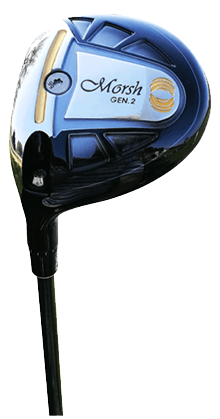Golf has a long history, and so do golf clubs. We will take an in-depth look into the history of golf clubs and how this golf club evolved.
Are you looking for golf club history? Golf has a long history, and so do golf clubs. We will take an in-depth look into the history of golf clubs and how this golf club evolved.
When the game began almost 600 years ago, golfers often made their golf clubs themselves, and the only material available was wood; in fact, they made the golf ball from wood until the late 17th and early 18th century.
Back then, golf clubs were all made from hardwood, such as beech for the clubhead and hazel or ash for the club shaft. Owning a set of clubs, known as "Troon Clubs" or "Long Noses" because of the length of the club heads, would have set you back a pretty penny.
The golf club history of the 2 Wood takes us back to the early days of golf when equipment was vastly different from what we use today. In the early 19th century, golf clubs were primarily made of wood, with players relying on a limited set of clubs to navigate the course. The "2 Wood" referred to the club that was second in line after the "1 Wood," which we now know as the Driver.
Today, the 2 Wood continues to evolve as golf club manufacturers incorporate cutting-edge technology and materials into its design. Golfers now have access to clubs that offer optimal launch angles, forgiveness, and customization, all while paying homage to the heritage of the 2 Wood.
At Morsh Golf, we celebrate the history and evolution of golf equipment, including the iconic 2 Wood.
The Wood In Golf Clubs
Hickory shafts soon became the most popular choice of wood clubs in golf shafts because of the wood’s durability.
The Golf Ball’s Evolution
Much like modern golf, the golf ball has a massive influence over a golfer's clubs.
In 1618 a new golf ball was introduced known as the "Featherie," so-called because the outer layer was leather pieces, but the inside of the ball was stuffed with feathers. However, the new ball was expensive to buy and easy to damage.
Unless you were rich and could afford to replace balls regularly, most golfers preferred to carry on playing with wooden clubs, even though forged iron head clubs were available. Wood clubs were gentler on the new featheries and didn't damage them as much.
Until the late 19th-century, manufacturers were still making wooden golf clubs by hand, and if you wanted a set of "irons," you would need to order them from the local blacksmith.
Introduction Of The Gutta-Percha Golf Ball

The Brassie - 2 Wood Golf Club
Because the manufacturers made the soleplate of the club from brass (an alloy of zinc and copper), the club earned the nickname Brassie. The soleplate wasn't just for good looks, though; the heavy metal gave the club a low center of gravity.
In typically bad lies, quickly getting the ball into the air is an absolute must; if you didn't want to spend hours thrashing around in the rough, the Brassie made it much quicker and easier for golfers to accomplish this.
The "Brassie" doesn't look much like the modern player's 2 wood. However, the loft angle and the modern-day use of a 2 wood relate to the Brassie, making it a close equivalent.

A few golfers now apply the term "metal woods" to these clubs, but most golfers still refer to them as simply woods; I know I can’t shake the habit of calling them woods.
Because of modern technology and lightweight materials, woods today have larger clubheads. This innovation enables even high handicap golfers to get the ball into the air and hit it over a reasonable distance. Something even thirty years ago was very difficult for the average club golfer.
Modern 2 Wood Golf Club

Rise Of The 2 Wood
A 2 wood's loft is more than that of a typical driver but not so great that it reduces height and distance too much, and with on average of a 1/4-inch shorter shaft, it helps club golfers hit the sweet spot more often.
We're talking primarily about amateur club golfers, not professionals.
In addition, the 2 wood has approximately 200 grams of head weight, which is not far away from your typical driver. The head weight helps golfers attain maximum swing speed and distance, two vital factors if you're looking to drive the ball as far as possible.
With practice, golfers can also use the 2 wood off the fairway instead of a 3 wood. I personally have a quite high ball trajectory so using a 2 wood is ideal for me. Not to mention the stingers into the wind which I wasn't able to hit before the 2 wood.
Who Makes A 2 Wood?
These days manufacturers such as Callaway and TaylorMade produce a new 2 wood they call Mini Drivers with lofts between 14 to 11 degrees.
Morsh 2 Wood
Another excellent 2 wood on the market is of course ours (Morsh Golf).

Final Thoughts
A vast amount of incredible technology and innovation goes into making modern golf clubs. Many club golfers are now starting to prefer the 2 wood over a driver because of the smaller head size.Modern golfers are typically fitter and stronger today. They believe they can swing a smaller clubhead faster, and in addition, there's much less air resistance and "wobbling feel", helping them find the club's sweet spot far more accurately than with the massive head size of today's drivers.



Comments (0)